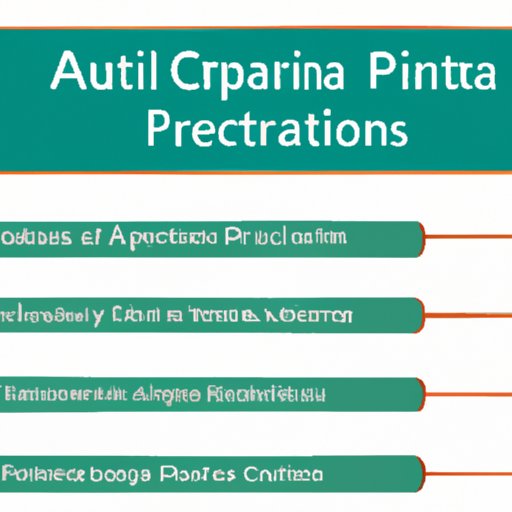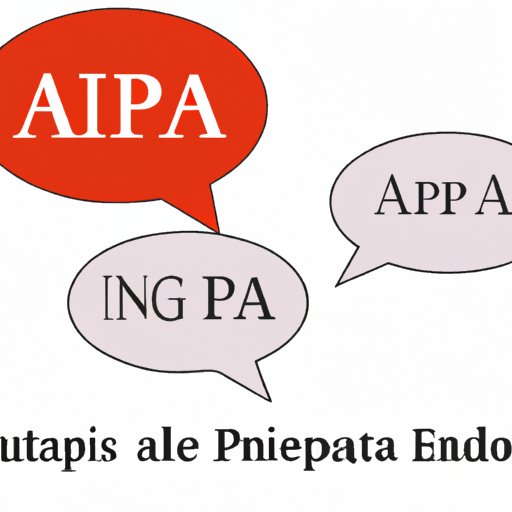
I. Introduction
One of the essential components of academic writing is correct citation. Accurate citations not only attribute credit to the original sources, but it also demonstrates the writer’s credibility and research skills. The American Psychological Association’s (APA) citation style is widely used in social sciences. Whether you are a student, researcher, or writer, knowing how to cite an article in APA format is crucial. This article will cover all the necessary steps and techniques to help you master APA citation for articles.

II. Understanding the basics of APA citation for articles
APA citation is a standardized referencing format that outlines the necessary components of complete and accurate references that include ethical writing mechanics, attribution and credit, and integrity and research practices. The idea behind APA citation is to provide adequate information for readers to locate the source quickly. It comprises two main elements: in-text citations and reference list citations.
The structure of an APA citation consists of four core components: author, date, title, and source. The general rule of APA citation is to include all four components unless any one of them is unavailable. For instance, if there is no date available, you should include “n.d.” to indicate the source has “no date.”
An example of an APA citation for an article is:
- Author, A. A. (Year of publication). Title of article. Title of Journal, volume number(issue number), page range. doi:xxxxxx
III. Step-by-step guide on how to cite an article in APA format
Here is a step-by-step guide to citing an article in APA format:
- Begin with the author’s last name, followed by a comma and initials of the first and middle names (if provided).
- Include parentheses with the year of publication. End with a period.
- Write the title of the article in sentence-case, capitalized only the first word and proper nouns. End with a period.
- Italicize the title of the journal and write it in title-case. Capitalize the first letter of all words except prepositions, conjunctions, and articles. End with a comma.
- Include the volume number of the journal, also italicized. Followed by an open parenthesis, then the issue number (if applicable), followed by a close parenthesis. Add a comma after the closing parenthesis.
- Include the page range of the article separated by a hyphen. End with a period.
- If available, add a Digital Object Identifier (DOI) number, prefixed with “doi:” and ending with a period.
For example:
- Lopez, M., & Greenburg, J. (2017). Friend or foe? Social media use in the workplace. Journal of Business Ethics, 140(2), 329-341. doi: 10.1007/s10551-015-2690-5
IV. Tips for citing print and online articles in APA style
Citing articles in APA format varies depending on whether you cite a print or an online article.
When citing print articles, use page numbers instead of URLs or DOIs. In contrast, online articles should include a DOI or URL in case readers are unable to locate the full text of the source. Another difference is the typeface used. In-text citations for print articles should be in non-italic, while online articles should be in bracketed, italicized forms.
An example of a print article citation is:
- Author, A. A. (Year of publication). Title of article. Title of Journal, volume number(issue number), page range.
An example of an online article citation is:
- Author, A. A. (Year of publication). Title of article. Title of Journal, volume number(issue number), page range. doi:xx.xx/xxxxx
V. Understanding the difference between in-text citations and reference list citations in APA
In-text citations appear within the body of the work and directly cite the source being discussed. Reference list citations, on the other hand, are included at the end of a paper, book, or article and provide complete bibliographical information for all sources mentioned in the work.
In-text citations refer to the author’s last name and the year of publication in parentheses. For instance, (Author, year).
Reference list citations include more detailed information, such as the author’s name, title of the article, journal, and date of publication. The reference list should be arranged in alphabetical order based on the author’s name.
VI. Common mistakes to avoid when citing articles in APA format
Here are some common mistakes to avoid when citing articles in APA format:
- Incorrect punctuation and spacing
- Incorrect or missing capitalization
- Incorrect or missing italicization
- Inaccurate or missing date of publication or volume number
- Inaccurate or missing DOI or URL information
- Missing author information.
To avoid these errors, double-check all elements of each citation and refer to the APA manual if necessary.
VII. How to cite multiple authors in APA format
When citing articles with multiple authors, include all author names in the reference list. In in-text citations, use the first author’s name followed by “et al.” to indicate that there are additional authors.
An example of a citation with multiple authors is:
- Author, A. A., Author, B. B., & Author, C. C. (Year of publication). Title of article. Title of Journal, volume number(issue number), page range. doi:xx.xx/xxxxx
VIII. How to cite indirect sources in APA format
Indirect sources are when a writer cites a source cited in another work. It’s essential to correctly cite indirect sources to avoid plagiarism and maintain academic integrity.
To cite an indirect source, include both the original author’s name and the name of the source that quoted it in the in-text citation. In the reference list, only the source that the writer consulted should be cited.
An example of an indirect source citation is:
- Original Author’s Last Name, year of publication (as cited in Citing Author’s Last Name, year of publication)
IX. Examples of APA citations for different types of articles
Here are some examples of how to cite various types of articles in APA format:
- Journal article:
- Author, A. A. (Year of publication). Title of article. Title of Journal, volume number(issue number), page range. doi:xx.xx/xxxxx
- Newspaper article:
- Author, A. A. (Year, Month Day of Publication). Title of article. Title of Newspaper, page range.
- Magazine article:
- Author, A. A. (Year, Month Day of Publication). Title of article. Title of Magazine, volume number(issue number), page range.
X. Conclusion
Correct citation is essential for academic writing, demonstrating credibility, and ethical research practices. In this article, we’ve provided an overview of APA citation basics, a step-by-step guide, tips for citing print and online articles, explained in-text and reference list citations, discussed common mistakes to avoid, how to cite multiple authors and indirect sources, and provided examples of APA citations for various types of articles.
We hope that this article acts as a handy guide for students, researchers, or writers looking to master APA citation. However, citation styles change over time, so stay updated with current APA standards. Additional resources, such as APA manuals or online citation generators, can aid citation accuracy and quickly generate citations with ease.





